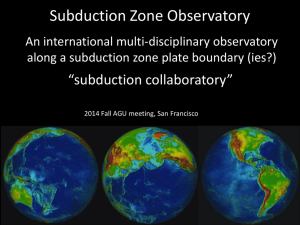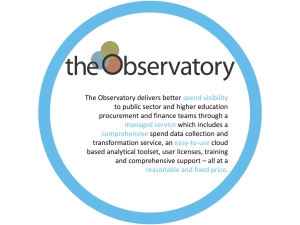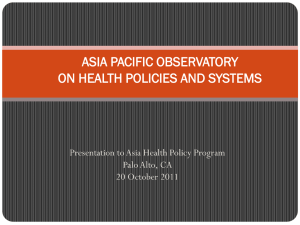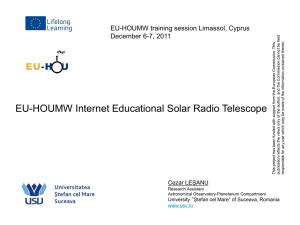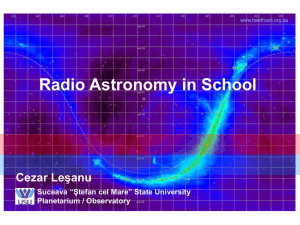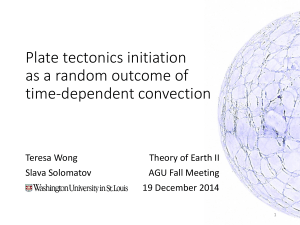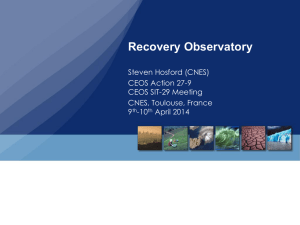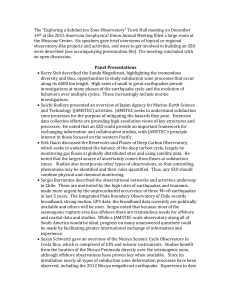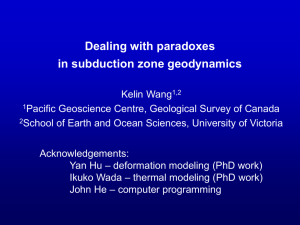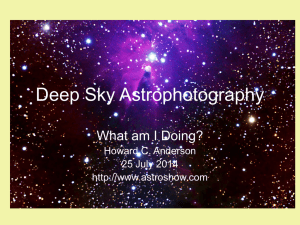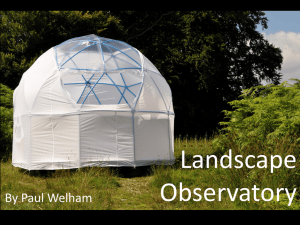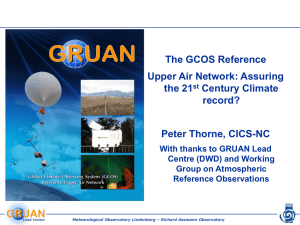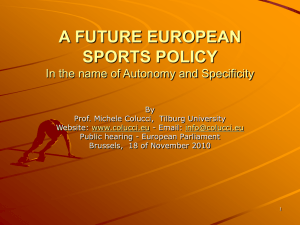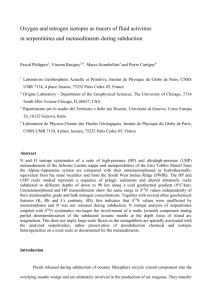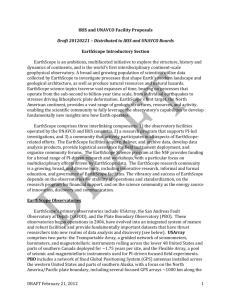SZO.AGU
advertisement
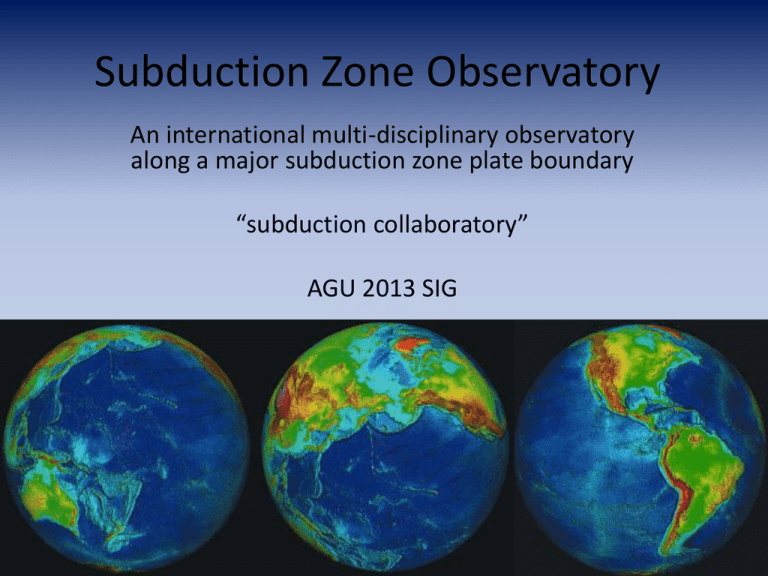
Subduction Zone Observatory An international multi-disciplinary observatory along a major subduction zone plate boundary “subduction collaboratory” AGU 2013 SIG Subduction Zone Observatory From a UW workshop on seafloor geology in Cascadia, June, 2012 Subduction Zone Observatory Must have: • • • • • • • • • Transformational & high impact science Societal relevance (strong focus on hazards) International collaboration Multi-disciplinary components On-shore/off-shore New technologies Atmospheric link New high quality Data Strong integration with modeling Subduction Zone Observatory Science motivation Systems approach to a complex inter-linked set of processes • • • • • • • • • • • • Observe the entire deformation spectrum from sec to Myrs Capture the pre-seismic, co-seismic and post-seismic deformational response to a megthrust earthquake(s) Mega thrust interface - earthquakes, slow slip events, episodic tremor Compare deformation over all scales (self-similar?) Tsunamis generation and impact (inundation) Volcano processes & hazards Geochemical processes at arcs Fluid flux through the crust and mantle Lithospheric removal processes Water in the deep mantle Subduction into the lower mantle Geodynamic processes associated with subduction Subduction Zone Observatory On-shore – Offshore Observations Modified from a UW workshop on seafloor geology in Cascadia, June, 2012 On-shore off-shore observations would contribute to a number of important scientific goals, specifically: • Constraining the rate of plate convergence • Determining the seaward extent of the locked zone • Detecting shallow slow slip events • Constraining the partitioning of strain across the prism • Understanding the nature of segmentation From O. Oncken and IPOC Group Subduction Zone Observatory An international multi-disciplinary observatory along a major subduction zone plate boundary Related on-going initiatives and activities • Cascadia – US, Canada, and Japan • Neptune – Canada cabled observatory • Alaska EarthScope - US • GeoPrisms – US and international • IPOC – GFZ, IGP Paris, Chile, Caltech • COCONet – Geodesy in Caribbean/central America - UNAVCO & international • TLALOCNets - Geodesy initiative in Mexico – international (proposal stage) • JAMSTEC – Japan • International Ocean Drilling Program • Many more… Subduction Zone Observatory From Glen Mattioli, UNAVCO From O. Oncken and IPOC Group Subduction Zone Observatory • What are the benefits / costs / payoffs of observatory approach as opposed to individual PI campaign observations and studies? • Alternatively – what will the observatory achieve that won’t be achieved otherwise? Subduction Zone Observatory Backbone instrument deployments and focused high-resolution studies Onshore and offshore seismology and geodesy Magnetotellurics Geochemical & Geological InSAR Crustal fluids LIDAR and bathymetry, seafloor mapping Infrasound More …. Leverage past, present, and future observing systems and temporary deployments Major international collaboration Subduction Zone Observatory Lessons Learned From EarthScope we know that we can: • Produce both expected and completely unexpected advances in scientific knowledge and methods • Leverage existing strategies and capabilities to increase scale by 10x or more • Create a community resource • Successfully straddle “big” and “small” science • Combine community experiments and individual PI experiments Other large community driven projects? A seemingly intractable scale problem can yield to a structured approach Subduction Zone Observatory A coherent, structured, multidisciplinary observatory along the length of the eastern Pacific From IRIS presentation at EarthScope meeting, 2013 Subduction Zone Observatory International Collaboration • Leveraged international resources and collaboration will allow us to do even more and move the science forward. • We should be mindful of differences internationally: • different funding methods • Different resources • Different cultures • The entire international community must benefit! Subduction Zone Observatory Where do we go from here? • Build momentum in the community! • Organize an international workshop to articulate the major science objects, facilities, etc… • Identify a small group to write proposal(s) for a coordinated international workshop to be submitted to different international agencies. • Compile information about on-going and related activities. • Compile slides to use in community discussions. • Identify other venues for a SZO discussion. • IRIS and UNAVCO workshops in 2014. • IASPEI regional seismology meeting in July of 2014. • Others?
